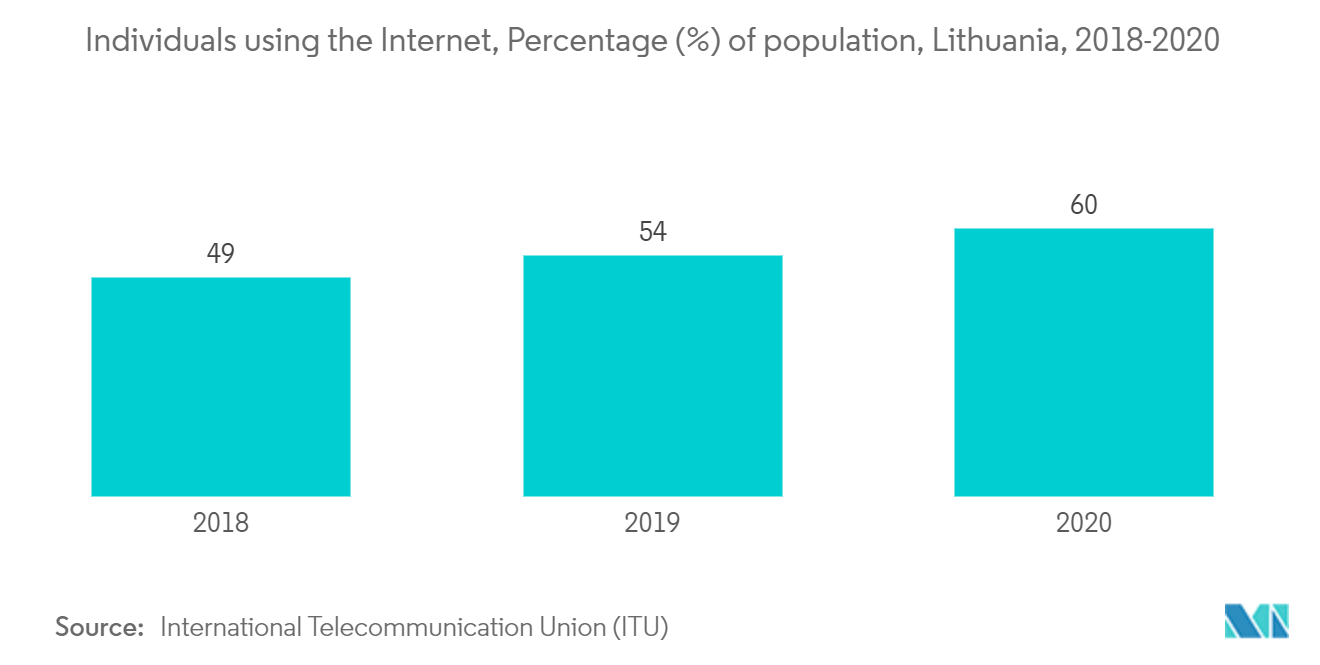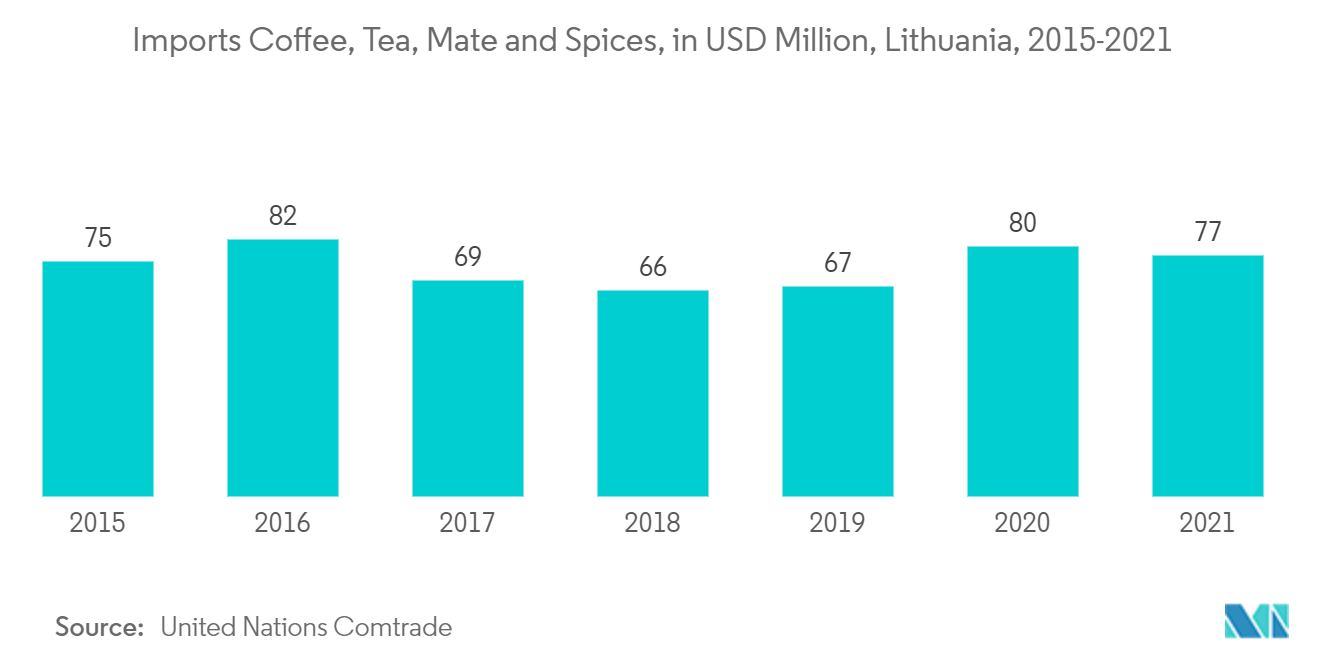Market Trends of Lithuania E-commerce Industry
This section covers the major market trends shaping the Lithuania E-commerce Market according to our research experts:
5G Services May Drive the Market
- According to GSMA, Lithuania had 3.91 million cellular mobile connections at the start of 2022. In January 2022, the number of mobile connections in Lithuania was 146.0% of the entire population. The high mobile penetration in the country has led to easy access to e-commerce channels for the people of Lithuania.
- The next generation of mobile networking standards, the 5G network, is positioned to provide an improved end-user experience by introducing new services and applications through seamless coverage, high data rates, low latency, and significantly improved performance and effective communications.
- The advancement of cellular network technology has enabled consumers to experience higher data rates and lower latency, resulting in a significant increase in the use of data-intensive services and apps. Consumer demand for video and business, as well as consumer shifts to cloud services, have prompted a huge increase in the volume of data carried by cellular networks.
- Developments in the 5g technology will provide fast internet services which may provide the customers with uninterrupted services during online shopping. For instance, in March 2022, Lithuania's regulator RRT announced that it allows operators to offer 5G services using their existing spectrum holdings. Such advancements are expected to influence the studied market positively.

Growth of Food and Beverage industry is One of the Factors Driving the Market
- The increase in the number of coffee and snack outlets is one of the main drivers of the fast food and coffee business growth. Specialty coffees have emerged due to the diversity of tastes and preferences for various varieties of premium coffee, which is driving the development of the market.
- Further, during the COVID-19 pandemic, business closure regulations came into force in March 2020, requiring all snack outlets and cafes not to sell food or drink for consumption on the premises and any part of the premises or part of the premises in which food or beverages are sold for consumption on such premises must be closed. The regulations allowed takeaway and delivery from these snack centers and cafes, which means people can continue to enter the premises to access takeaway services, including delivery drivers. This has led to drastic growth of the market.
- According to United Nations Comtrade, Lithuania's coffee, tea, mate, and spices exports were USD 77.24 million in 2021. Excellent time and information management are critical in the food and beverage industry for a positive customer experience and a smooth purchasing path. The company can provide exactly that with the correct, data-rich, dependable website.
- Customers buy things online using merchant apps/websites and then pick them up in stores. Curbside pickup was already gaining acceptance before COVID-19. Owing to its contactless nature, it acquired even more traction among businesses and consumers with the advent of pandemic-related limitations. In February 2021, Walmart+, for example, had 8 million subscribers.
- If E-commerce is new to the company, it will also necessitate a considerable talent acquisition effort, but bringing in outside talent is frequently the greatest option for success. As a result of adequately organizing around e-commerce, decisions are taken considerably more quickly than they would otherwise. Price changes, for example, can be made numerous times per day online vs. over several months in a physical store.


